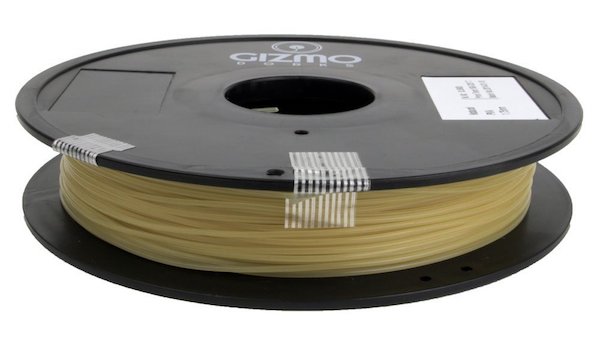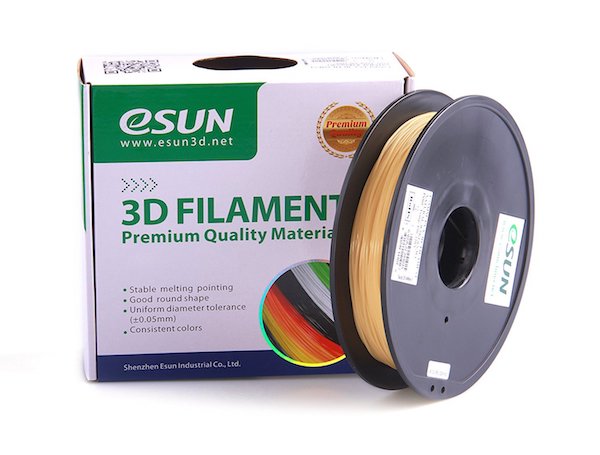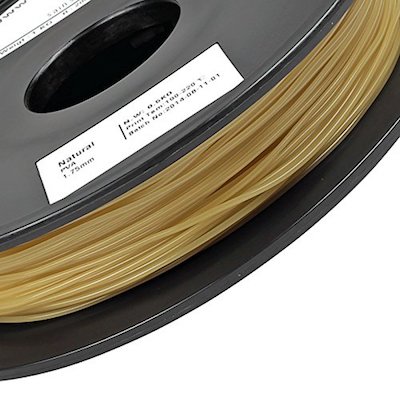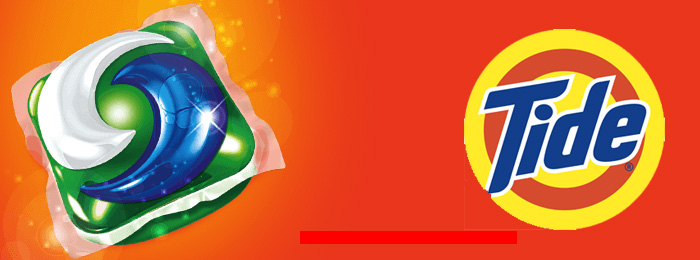Dissolvable PVA Filament: Properties, How to Use Them, and Best Brands
Many of us wish making 3D prints was as easy as plugging in your design on the slicing software and letting your printer do all the work. This may be the case for simple design, but more complex ones may require a bit more planning.
Bridging and overhanging parts are some of the most common challenges you might encounter before you can successfully print a relatively complex design. In these instances, you will need to incorporate support structures into your design. In this article, we tackle everything you need to know about PVA filaments, one of the best options you have when it comes to building support structures.
What are PVA filaments?
Polyvinyl alcohol (PVA) is a long-chain polymer composed of vinyl alcohol monomers. Manufacturing PVA starts from polymerization of vinyl acetate, with the resulting polyvinyl acetate converted to PVA by esterification with alcohol. Oftentimes, less than 100% of the polyvinyl acetate groups is converted to PVA. The amount of remaining acetate-containing groups (called ‘esters’) determine the properties of the final PVA plastic.
In its natural state, PVA is a colorless (white) and odorless plastic. It is non-toxic and biodegradable. PVA is known for being an excellent emulsifier and adhesive, and for excellent film forming properties. Thus, PVA has been used as an ingredient for paper adhesives, textile glaze, paper coatings, contact lens solutions, and other home and industrial applications. It has also been used as a surfactant for nanobead applications, and as a fixative for mounting specimens.
Another useful property of PVA is its solubility in water. Since it is also biodegradable, PVA has been used to create water-soluble and environment-friendly packaging solutions. The newsworthy Tide Pods, as well as other laundry detergent pods, commonly use PVA as their water-soluble pouch. PVA has also been widely used as capsule material for dry or oil-based bait in sport fishing. The characteristic solubility of PVA is the main reason for this material findings it way into the 3D printing field.
What are the benefits of using PVA filaments?
PVA has high tensile strength and flexibility, moderated only by its vulnerability to humidity. It has also exhibited good resistance to oils, grease, and solvents.
As a printing filament, PVA is exclusively used as a support material. Support structures are sometimes needed when printing very complicated designs or designs that have overhanging features. Without any support structure, these overhangs can warp while the plastic material is still hot, or collapse entirely. The water solubility of PVA makes it an excellent support material, as removing it from the final print involves only soaking the finished product in water. Using warm water speeds up the dissolving process. This means that you will not need any special solvent to remove the PVA supports from your print.
Another characteristic of PVA that makes it an excellent support material is its good adhesion properties. This means that PVA will stick very well to your main print material, given that you are using correct print temperature settings.
PVA and PLA print at very similar temperatures, making them especially compatible. If you’re printing with PLA and you think your design will need supports, then PVA is by far your best choice. Printing with other materials (TPU, Nylon) can be tricky, but not impossible. You may also need to consider other support materials, such as HIPS.
Lastly, PVA is a completely biodegradable product. When dissolved in water, PVA breaks down into its individual vinyl alcohol monomers. This solution can be safely disposed down your drain in small volumes, although we recommend flushing your drain with additional water to remove the PVA-saturated water from your pipes.
How do you use PVA filaments?
As we have mentioned, PVA works best as a support material to PLA since they print at similar temperatures. This ensures little to no warping in either material, and good adhesion between them. You are going to need a printer that is capable of dual extrusion so you can print PVA and PLA at the same time. If your printer is not equipped with dual extrusion, then we recommend considering an upgrade. Dual extrusion not only allows you to make prints with supporting structures, but to print using two different colors at the same time.
Although different brands and products recommend their own printing temperature settings, we find that a temperature between 185 °C and 200 °C works best for PVA. Make sure to not go above 200 °C as PVA degrades quite rapidly at high temperatures.
A heated bed is not required when printing with PVA, but it is highly recommended to improve adhesion. If you have a heated bed, then a temperature of 45 to 60 °C should be optimal for both PLA and PVA. Bed temperature can be a little on the hot side for the first few layers, and gradually decreased as the print progresses. For adhesion, a layer of blue painter’s tape or glue stick applied to the surface of the heated bed should do nicely.
PVA can be quite fragile while it is hot, so we recommend printing speeds that are a little lower than usual. You can play around with the settings, but we recommend starting at a speed of 30 mm/sec.
For best results, we recommend using a cooling fan at low setting while printing using PVA. As we have said, PVA can be quite fragile while it is still hot, so a fan setting of 50% should be the maximum.
What are the drawbacks to using PVA filaments?
The properties of PVA make it the best support material for PLA prints, but not necessarily for other filament materials. Some users have reported success with using PVA to support TPU and Nylon prints, but the differences in printing temperature of PVA to these materials may lead to warping issues. ABS, in particular, prints at a much higher temperature. If you are planning to print with ABS, then we recommend taking at a look at our article on HIPS filaments.
The solubility of PVA in water also means that it can naturally degrade when exposed to moisture. PVA filaments absorb moisture as soon as they are taken out of the pack, so they need to be stored in airtight containers with desiccant packs. PVA that has been exposed to moisture for a long time may not be as durable or may contain bubbles that will evaporate during printing. If you have an oven, then you may use that to dry your PVA filament right before printing.
Depending on the design you are printing, clogging of extruder nozzles can occur when the hot end with PVA is left hot for long periods without extruding. To avoid this problem, you may look at multi-extruder printer models that have provisions for cooling down the hot end of an extruder while it is not in use.
Another drawback in using PVA is the fact that it’s generally quite expensive. Shopping around for PVA filaments will reveal that PVA is much more expensive than PLA, the material that it’s supporting. It then becomes a matter of optimizing the amount of PVA you will use for each print, by using only the least amount of PVA that your design will need. Some 3D printing software have dense support capabilities that can help you save up to 90% of support material.
Best Brands
PVA is a fairly common filament, and there are probably dozens of different products in the market today. Below we list down the best-selling and most reliable PVA brands that we highly recommend.

Up first is the popular GizmoDorks brand, who sells their PVA filaments in 0.5 kg spools. Available in both 1.75mm and 3mm sizes, the PVA filament from GizmoDorks is made to support PLA and is compatible with many popular printer models.

The PVA filaments from eSun are sold at practically the same price tag and are also available in both 1.75mm and 3mm sizes. Spools are sold only at 0.5kg increments. Although not as popular, the filaments from eSun have consistently received glowing reviews from buyers.

Lastly, SainSmart provides a slightly more affordable PVA filament. Available only at 1.755m size and 0.5 kg spools, the PVA filament from SainSmart has been described as being compatible with a huge array of popular 3D printer models.
The Roundup
| Material | Polyvinyl alcohol (PVA) |
| Properties | – Dissolves in water – 100% biodegradable – Resistant to oils, grease, and solvents – Printer settings are compatible with PLA |
| Applications | – Support structures for complicated designs or designs with overhanging features |
| Recommended printing temperature | 185 to 200 °C |
| Recommended bed temperature | Heated bed not necessary; If using heated bed, the recommended bed temperature is 45 to 60 °C |
| Adhesion | Blue painters’ tape or glue stick |
| Printing speed | Slow printing speeds; about 30mm/se |
| Cooling | Slow cooling fans settings; 10% to 50% |
PVA filaments do only one thing but they do that thing exceptionally well. Although quite tricky to work with while printing, the effort is all worth it as using PVA filaments makes removing the support structures practically effort-free. Some designs just call for support structures, and there’s no going around that fact. If you are planning to do a complex PLA print, then it may be worthwhile for you to start learning how to work with PVA.



